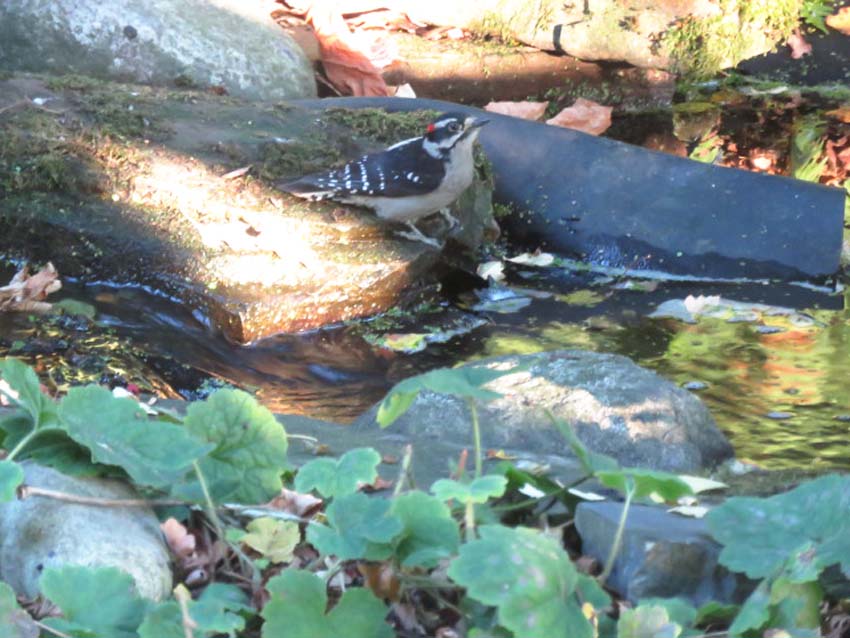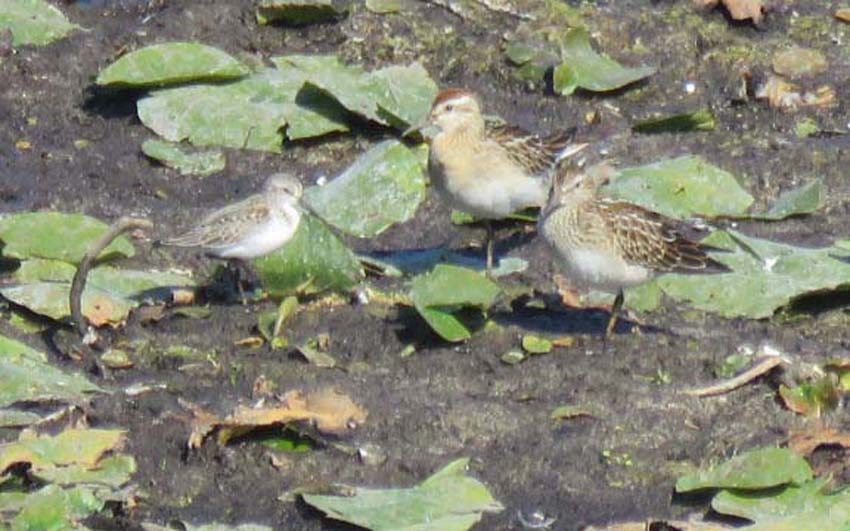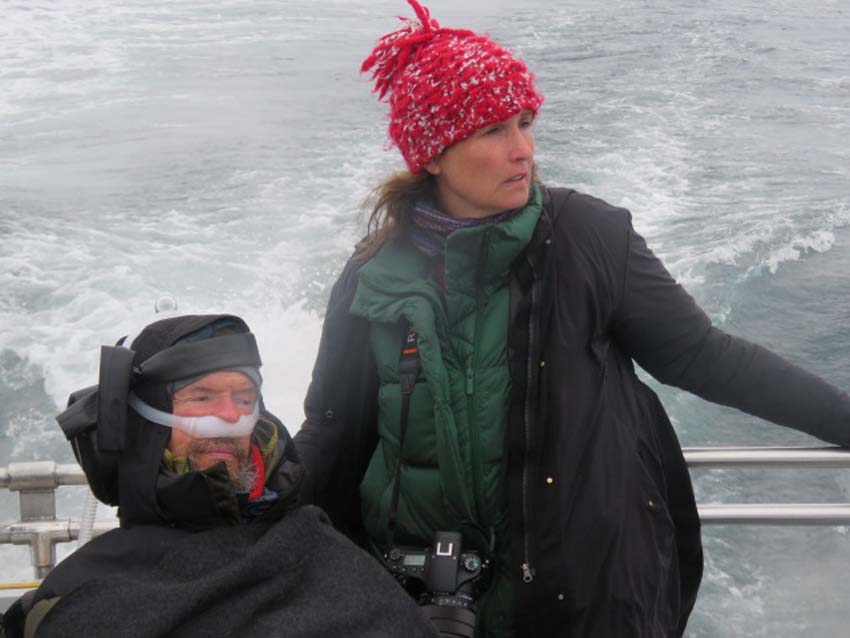
09 Oct Shots from the Brave New Dessicated Northwest
Posted from Seattle, WA , October 9 2022
Since the beginning of June the Cave Creek Ranch in Portal, Arizona has received 24 inches of rain. Here in Seattle we have received .03 inches, although the number may be higher we may have gotten some in June.
But as Delia and I tread the dusty paths in the area and amidst the crying plants and the lightly smokey air, we still are seeing some great things.

This handsome male Downy Woodpecker visited Butyl Creek, the recirculating creek in our backyard on Beacon Hill yesterday. It astonishes me that the lowly Downy Woodpecker, rarely grouped in with the glamour birds of the continent, so often comes to the aid of the photographer and provides a glamour shot.

Speaking of glamour shots, this one of a Cooper’s Hawk cuts both ways. This bird, which we think is a male (smaller than a female) loves to come by for the day and spend all his downtime sitting literally in the creek or at the little pond at the end of the creek which we call Pumphouse Lake. For the four hours he’s there, no other bird dares to take a bath, although the Steller’s Jays will loudly scold until they get bored. But he almost makes it up by giving us in this instance my best Cooper’s Hawk shot ever.

Welcome Seattle Ravens! Years ago I predicted that Ravens would gain a beachhead in Seattle (my prediction is somewhere in the Tweeters Archives). They have been tightening the noose on their rivals the Crows for years, with the warfare between Crows and Ravens occurring in an ever-tightening noose around Seattle. This bird is part of a couple and was photographed yesterday at Capehart in Discovery Park. Whether the Ravens will ever be able to take the neighborhoods remains to be seen. If they do, the human/bird interface will get tricky. In places like Singapore where there is a very large Corvid there is also active warfare and killing of the big birds, although I’m not up-to-date on this. Since I blame the Crows for taking down the Common Nighthawks, the Band-tailed Pigeons, and having a role in the declines of both or all the Swallows and perhaps the Vaux’s Swift, I’m slightly pro-Raven, but the advent of the Raven won’t bring the other birds back, although destroying the current hegemony of the Crows could help.

The bird that got me birding back in 1963, a Green Heron, sits in Yesler Swamp.

Here is a trio of more and less common Sandpipers of Western Washington, from the walkway along 520 at Foster Island. The red-capped bird is a rare Sandpiper from Asia that normally winters in Indonesia. Some come over to North America every year, and we were lucky, and many people saw this bird. The other bigger bird is a Pectoral Sandpiper, more regular in our area, and wonderful classic Sandpiper. The bird on the left is a Western Sandpiper, which in the spring sports a nice red back and crown and is probably the most abundant migrant Sandpiper in the Northwest.

I’ve always liked the idea of ducks swimming on glassy water surfaces with busy reflections. One of my paintings, Poulsbo (Winter Respite AKA Last Tango in Poulsbo) attempts this. Here a Wood Duck swims by a Gadwall pair through reflections at Yesler Swamp at Union Bay.

Brian and Darchelle continue their brilliant attack on the Washington Bigyear record. No year is the same, no year offers the same opportunities or challenges, so competing year-to-year involves more asterisks than the one that ruined the remainder of Roger Maris’s life. Yesterday we were out on a 6-hour vigil at Discovery Park with Brian and Darchelle to see a Leach’s Storm Petrel or a Brown Booby, both of which had been reported in the Sound. I am not speaking for Delia, but I left defeated and dejected and this morning said “I’m so glad we can stay home this am.” Then at 9:30 in the morning we got a text from Darchelle that after only one hour of watching through a scope specially set up for Brian, he got an excellent view of a Leach’s flying right through the scope view and even seeing its trademark white rump patch, with Darchelle getting great views also. This puts them unofficially at 366 species seen in Washington this year and presents a lesson for me that I never seem to learn: Don’t be so fast to wimp out!” Here Darchelle and Brian are at the stern of the Monte Cristo, chugging somewhere 40 miles out along the continental shelf this September.

Sorry, the comment form is closed at this time.